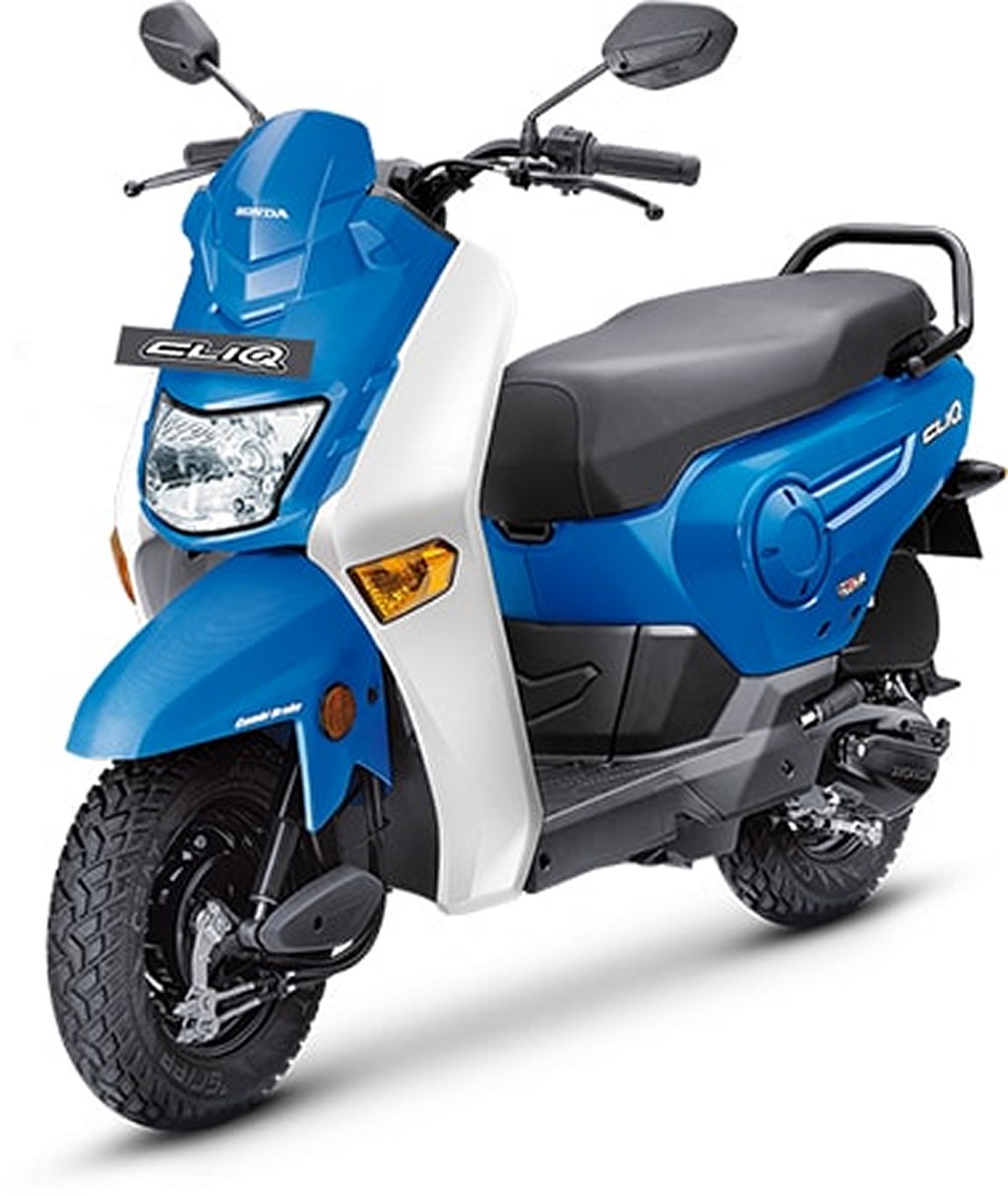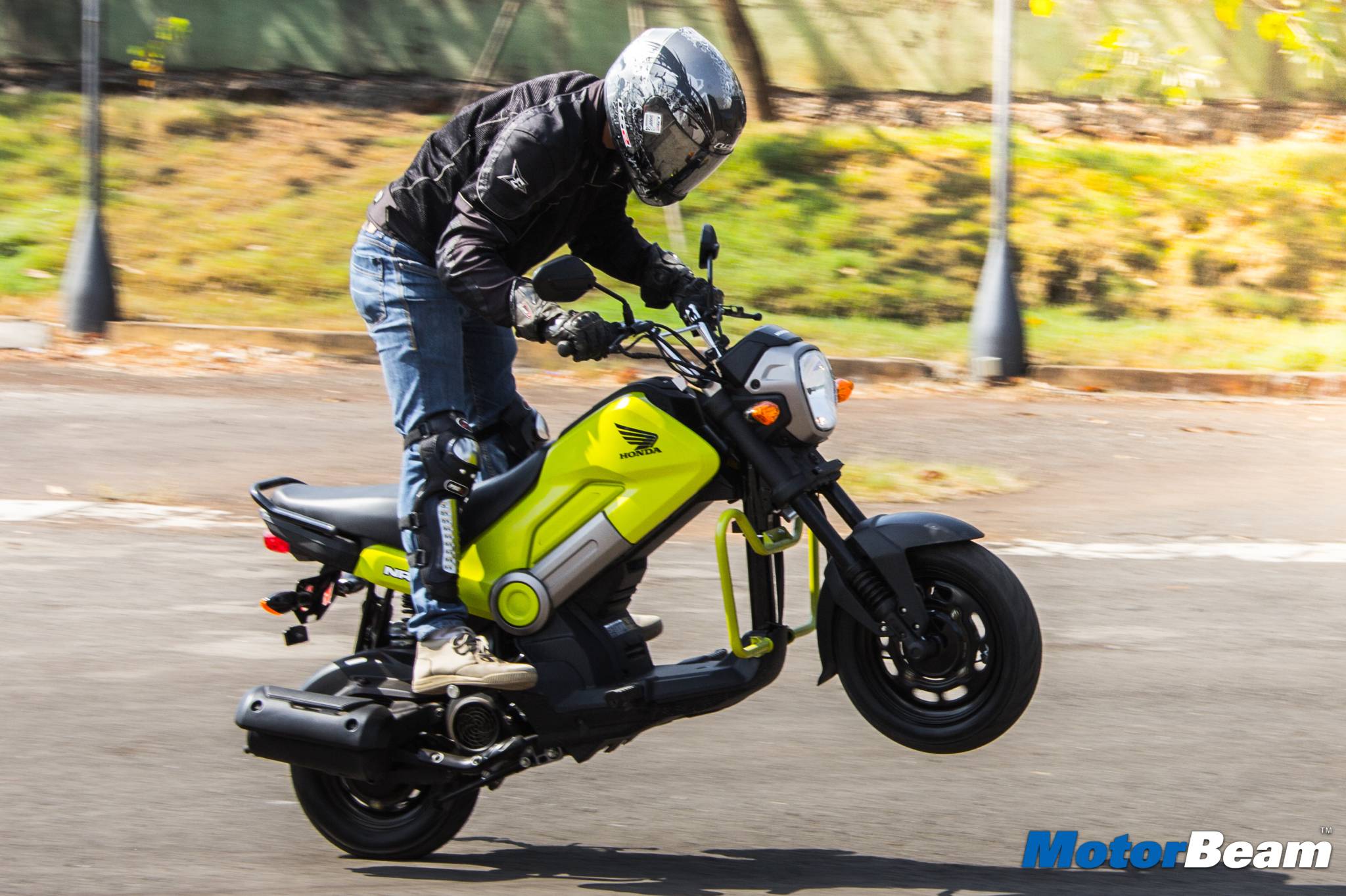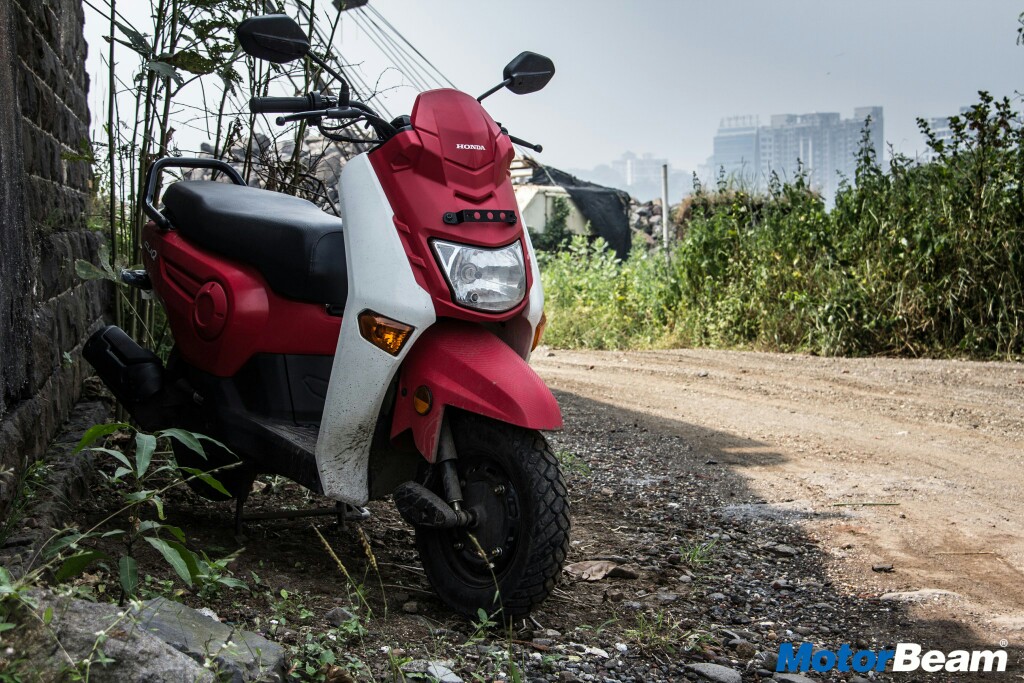The engine is compliant to BS4 norms and gets Honda Eco Technology
Performance – Thumb the starter, twiddle the throttle and inherent smoothness of the motor is felt from the word go. No prizes for guessing that the engine powering the CLIQ is shared with the Activa, Dio, Aviator and what not! With power and torque figures peaking at 8 BHP and 8.94 Nm respectively, this 4-stroke 109.19cc motor is definitely not supposed to burn the tarmac. But what helps its case is the kerb weight of just 102 kgs achieved through the plentiful use of fibre body panels that gives it a sprightly low-end. In fact, thanks to the seamless V-Matic transmission, tackling city traffic in the CLIQ is a breeze. Performance is peppy in the 0-60 km/hr territory and the sudden surge of acceleration ensures that you stay ahead of the pack without much effort in city commutes.
The scooter is a peppy performer but lacks grunt on the highway
The initial pickup is excellent due to its low kerb weight but lacks top-end punch
As speeds go north of 60 km/hr, the responsive nature of the engine starts to fade and it takes forever to reach its rated top speed of around 80 km/hr. Since Honda is aiming the CLIQ at rural areas where average speeds are on the lower side, it is pointless to explore the fag end of its performance. Progress is dead slow as the speedometer nears its red zone and it’s safe to stay under 60 km/hr to get the best of both – performance and fuel efficiency. Speaking of efficiency, this scooter is pretty frugal and returns around 45 km/l under mixed riding conditions. However, fuel tank capacity of a mere 3.5 litres gives it a limited tank range of around 150 kms. Frequent stops for refuelling, especially on a scooter which is supposed to be loaded with farm equipment, grocery, etc., is a huge source of inconvenience. On the brighter side though, things are hunky-dory on the move because of the superb refinement levels, well-contained engine noise and the non-existent harshness. On this side of 60 km/hr, that is!
The pillion footpegs look ultra-cheap but their positioning is spot-on
Riding Dynamics – Utilising a conventional trailing arm suspension at the front and spring-loaded hydraulic setup at the rear, the Honda CLIQ sits atop an Under Bone chassis which, going by scooter-standards, provides it confident handling. Even with the block pattern tyres which offer flawless off-road grip, ride quality isn’t comfortable due to the dated suspension setup. The Navi’s sure-footed handling and poise, lent by its telescopic front forks, is missing on the CLIQ. The scooter bounces around on less-than-perfect roads and its stiffly-sprung rear end ensures that road undulations say hello to every single bone in your lower back! Even though carving corners is not a scooter’s forte, the CLIQ feels nimble and is easy to flick into different directions without losing composure, thanks to the motorcycle-inspired handlebar. But the insubstantial build results in instability at high speeds. Braking is performed by 130 mm drum brakes at either end, aided by Honda’s Combi Brake tech, which gets the job done. However, the braking hardware is no match for scooters equipped with a front disc.




